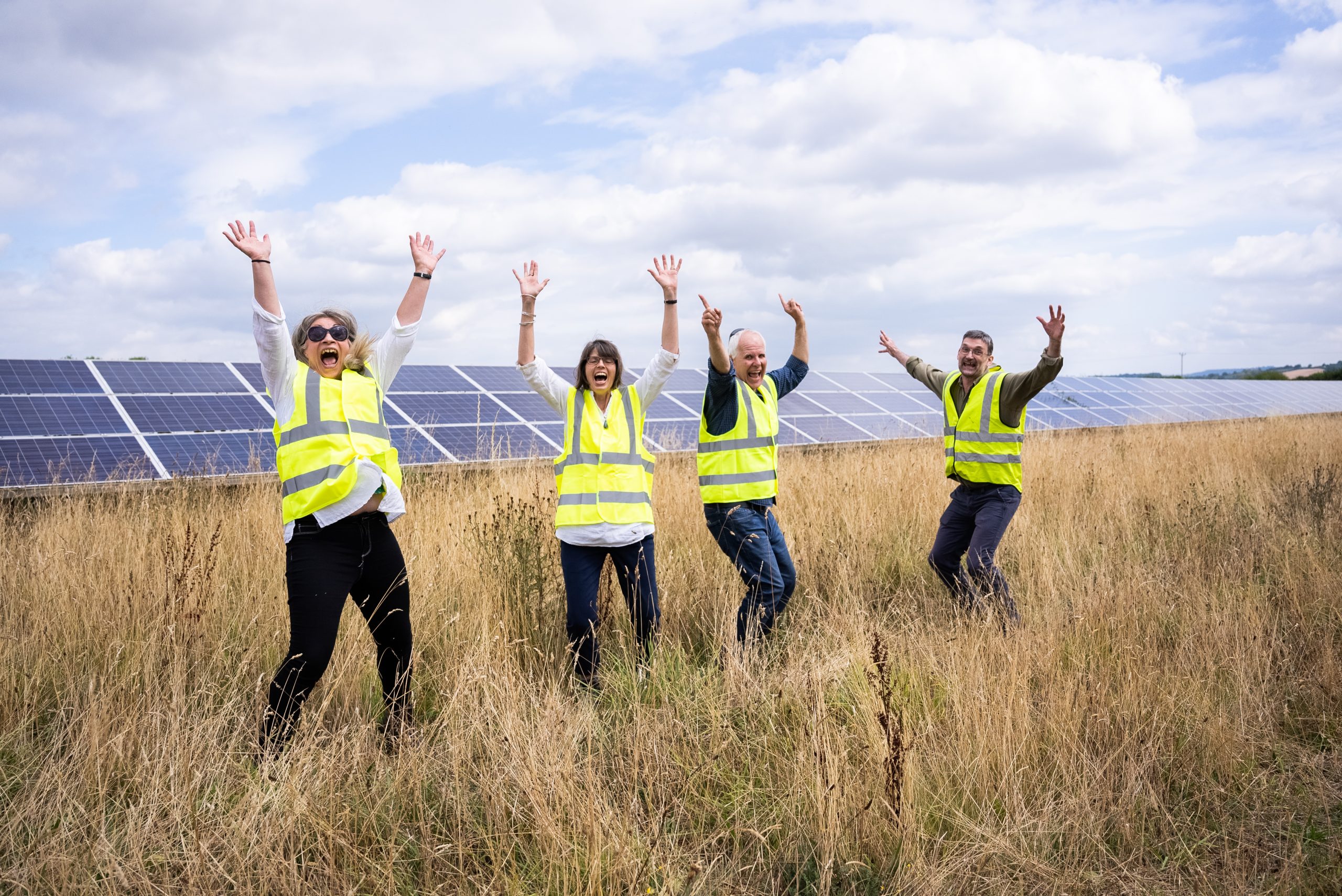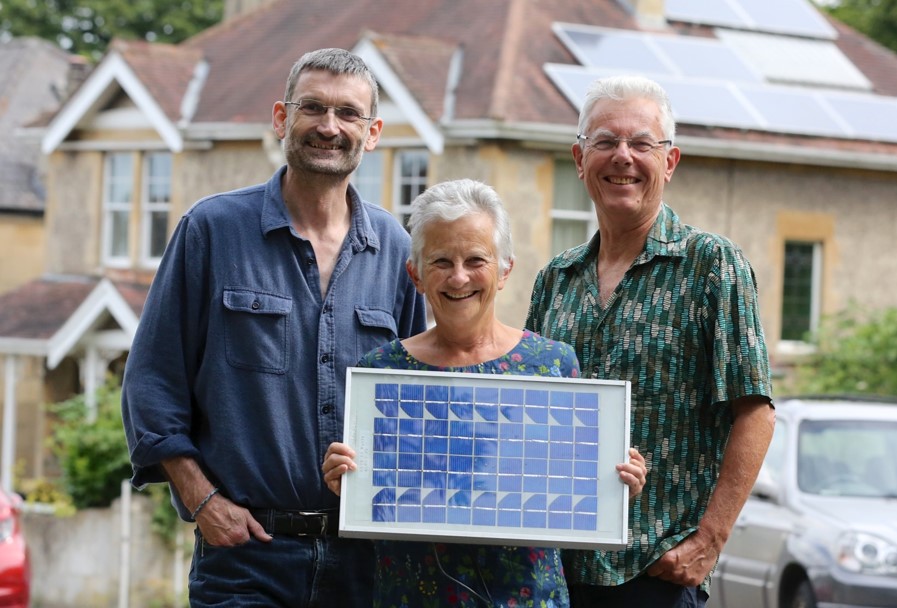Community Energy Organisation
Bath & West Community Energy (BWCE)
As a community energy organisation it was important to clarify BWCE’s role , especially in the partnership with the digital technology provider, Stemy Energy.
In Flex Community™ BWCE carried out the following functions:
- Publicised Flex Community™ and carried out outreach and engagement to recruit householders as potential participants in the BWCE area of benefit. For more information see Engagement Tools.
- Undertook a non-technical assessment of the suitability of each householder. For more information see issues around engaging householders.
- Supported Stemy Energy to develop the Flex Community™ Portal through testing its functionality at each stage of development to ensure users have as smooth an experience as possible.
- Recruited installers of eligible energy technologies into Flex Community™ through promotion and engagement.
- In conjunction with Stemy Energy, approved Flex Community™ Plans and managed householder and installer engagement in Plans through to installation. For more details on Plans see Flex Community™ Portal.
- Monitored householders and installers experience of Flex Community™ and liaised with Stemy Energy to deal with any problems.
- Sought feedback from householders and installers in order to learn from their experience and further develop Flex Community™ .
BWCE has traditionally developed, fundraised for and installed non-domestic renewable energy projects. Our involvement in Flex Community™ required us to expand our role into new functions, including:
- Promoting the project to householders and engaging them. We had already had some experience of this with our Solar Streets project but this was targeted at a much smaller geographical area.
- Customer service provision, both during and following the installation of equipment.
Any community energy organisation wanting to develop work around flexibility will need to take into account that an expansion of role is likely to be required and that this will have implications in terms of systems, skills and time.
Digital Technology Provider
Stemy Energy
Stemy Energy is a Spanish company developing digital technology to support the energy transition.
In Flex Community™ Stemy Energy carried out the following functions:
- Developed and produced the smart devices to enable household energy technologies to offer flexibility.
- Developed and provided the Flex Community™ app to control the energy technologies via the smart devices.
- Operated the artificial intelligence platform Sploder to generate simulated signals to the smart devices to offer flex.
- Developed, operated and maintained the Flex Community™ Portal.
- In conjunction with BWCE, approved Flex Community™ Plans and managed householder and installer engagement in plans through to installation. For more details on Plans see Flex Community™ Portal.
- Liaised with the Distribution System Operator to test how flexibility requests work with their platform.
- Provided data to assess the success of simulating flex signals.
For more information check out Stemy Technology.
Householders
A community of householders willing to have their energy technologies (heat pump, electric vehicle charge point, immersion heater) automatically managed to enable them to offer flexibility to the electricity grid.
Things to consider when engaging householders
For a domestic flexibility project to work you need the participation of householders. Based on our experience here are some key issues to consider when setting out to recruit householders.
Technology
- Does their existing home energy technology match the needs of the programme? For us this meant people who had already installed ev chargers, heat pumps or immersion heaters.
- And are these technologies compatible with the smart devices you will be using? Flex Community™ could only work with certain makes and models that could be made compatible with the smart devices to enable flexibility.
- Or do they want to install one of the eligible energy technologies and are prepared to install one that is (currently at the time of installation) compatible with one of the smart devices? As this was a trial we found that not all makes and models could be made compatible within the project timescale so this restricted who could participate.
- And are they willing to install in the timescale required by the programme?
Motivation/attitude
- Are they willing to allow their energy technologies to be managed automatically by Flex Community™ smart devices? Although there was always the option of over-riding the technology when necessary we needed people willing to cede some control to make the trial work.
- Are they willing to be a pioneer? Flex Community™ is a trial and we couldn’t guarantee that it would always run smoothly. Due to this we needed ‘pioneers’ to get involved. Our participants were generally motivated by the desire to do something about the climate emergency and were prepared to explore flexibility alongside us.
Location
In setting up a flexibility project you will need to decide from which area you will be recruiting participants. Here are some factors you will need to take into consideration.
- Your area of benefit. You would need to take this into consideration. If you want to work outside it, would you need to consult with and/or collaborate with another community energy organisation?
- Flexibility payments. Do you have the means within your programme (e.g. through funding) to pay householders for offering flexibility? If not you will be relying on your Distribution Network Operator (DSO) to offer payments. If they do offer payments it may be for a specific area and you will need to factor this in when you recruit participants.
- Installer logistics. You will need to identify the geographical range over which your chosen installers are prepared to work and any logistics associated with this.
Personal circumstances
Due to the nature of the project certain other factors came into play and you will need to take a view on these when developing a flexibility programme:
- Housing tenure. Generally we were looking for home owners. If rented (social or private) it was important that the landlord was consulted and agreed to participate.
- Finance. Because we were recruiting householders who either had or wanted to install certain energy technologies financial factors were an important consideration.
- Vulnerability. As Flex Community™ was a trial we didn’t want to recruit anyone who was particularly vulnerable. However, this needs to be sensitivity handled during the recruitment process.
Installers
We recruited installers of heat pumps and electric vehicle charge points into Flex Community™. Here are some guidelines for working with installers based on our experience.
Finding installers
- Think about what type of work you will need installers to do. In our case we need electricians to install the Stemy smart devices and installers of both ev charge post and heat pumps.
- Find out which ones cover the area you are working in. You can find lists at Microgeneration Certification Scheme (MCS) and Renewable Energy Consumer Code (RECC).
- Check if people in your organisation have recommendations as a gauge of good workmanship and after sales care
Recruiting installers
- We prepared an introductory briefing for potential installers.
- We held on-line presentations that explained the Installer Journey.
- We required them to sign the Terms and Conditions for Installers with its associated Privacy Policy.
When contracting installers to Flex Community we required them to provide us with the following:
- Confirmation of Renewable Heat Incentive (RHI) accreditation for heat pumps. This is now closed and replaced by the Boiler Upgrade Scheme.
- Confirmation of Microgeneration Certification Scheme (MCS) accreditation for heat pumps
- Copy of Renewable Energy Consumer Code (RECC) membership – or equivalent
- Copy of Health & Safety policy
- Copy of safety certification (Safecontractor of equivalent)
- Copy of latest published financial accounts
- Copy of Employer’s Liability, Professional Liability and Public Liability insurances
- Copy of workmanship terms and conditions
- Sample Risk Assessment Method Statement (RAMs) for heat pump install
- Copy of a typical quote for a residential client
- Details of typical customer journey with residential clients
- Confirmation of installer status with manufacturers whose products they install
- Certificates of competency for key staff working on design and installs within the area of the flexibility project/service, including heating and electrical and safety qualifications and specific heating installation qualifications
- If using a subcontractor, details of their records and also length of relationship and type of relationship with the installer
Issues to plan for when working with installers
- Installers can get very busy, especially when specific grants for householders are available, and this can cause significant delays.
- Check if the system you plan to use for engaging installers can be matched with the way that they normally work. Initially we wanted installers to use a booking system on the Flex Community™ Portal but this did not work because it would mean them having to manage more than one calendar which would have been inefficient and prone to error.
- If the installation involves any specific, novel equipment they may not have come across before, ensure they receive it in good time prior to the installation date so they have the opportunity to ‘get a feel for it’.
- Ensure too, that they have the accompanying Installation Manual in good time to give them the opportunity to familiarise themselves with what’s involved and to have ready supplies of standard electrical materials to accompany the installation (if required).
- For novel innovative equipment installation, ensure technical support is available on-line or via the phone.
- If the installation also requires the householder to have an App to operate the installation, make sure the installer is briefed on how to help with this.
Distribution System Operator (DSO)
Western Power Distribution (WPD)
Distribution Network Operators (DNOs) have evolved into Distribution System Operators (DSOs), with the aim of managing the grid in a far more flexible and dynamic way to meet the needs of the energy transition. One key aspect of this development is enabling local flexibility services. Each DSO will have a strategy for flexibility services so you will need to check the one that covers your area.
Inevitably, with small amounts of ‘flex offerings’ from domestic consumers, intermediaries are needed to aggregate these amounts into into a much larger offering that can be sold to DSOs. These intermediaries are known as aggregators. Community energy organisations are in a strong position to play this role through engaging domestic customers.
The DSO in the BWCE area is Western Power Distribution (WPD). Flex Community™ worked with WPD to test how flexibility requests work with their Flexible Power platform.


